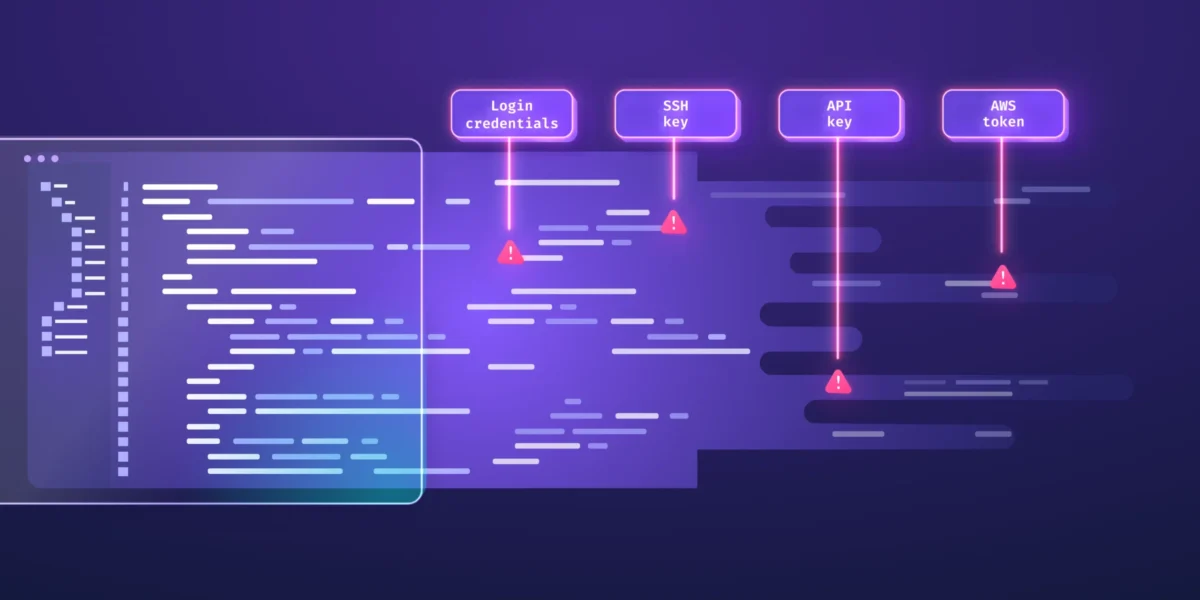
In modern software development, “secrets” refer to sensitive credentials, such as passwords, API keys, encryption keys, and access tokens, that grant access to systems and data. These secrets are integral to the functionality of applications, enabling secure communication between services and access to critical resources. However, when these secrets are mishandled – such as being hardcoded into source code or stored in unsecured locations – they become vulnerable to exploitation by unauthorized parties. The issue is compounded when mismanagement of secrets leads to the improper storage and access of this information, leading to “secret sprawl.”
Introducing Secret Sprawl
Tech sprawl in all forms poses serious issues for companies and their efficiency and productivity. With secret sprawl, the uncontrolled proliferation of secrets across various parts of an organization’s infrastructure, including code repositories, configuration files, automation scripts, and shared documents, opens up serious security risks.
This dispersion often results from practices like hardcoding credentials into code or embedding them within configuration files or automation scripts for convenience. As organizations scale and their infrastructure becomes more complex, keeping track of all these secrets becomes increasingly challenging.
The dangers of secret sprawl are significant:
- Security Breaches: Exposed secrets can be discovered and exploited by attackers, leading to unauthorized access to systems and data breaches.
- Operational Disruptions: Attackers use exposed secrets to take control or vandalize systems, leading to catastrophic operational failures and can also cause lasting damage to a company’s infrastructure, reputation, and customer trust
- Compliance Issues: Many regulatory frameworks require stringent controls over sensitive data (e.g., GDPR, CCPA, PCI-DSS, HIPAA). Secret sprawl can lead to non-compliance and hefty fines.
The Cure for Secrets Sprawl: Manage, Detect, Prevent
The good news is that there are strategies to manage secret sprawl. Through developer training, secrets management tools, continuous secrets detection, and proactive prevention of secrets reaching repositories, preventing secrets sprawl becomes part of a holistic DevSecOps framework. To mitigate secret sprawl, you have to implement both secrets management and secrets detection. The two are related, but they serve different purposes.
Secrets management is all about providing developers with a secure method of storing and using secrets. It focuses primarily on preventing secrets sprawl by managing secrets in one secure, centralized tool. Robust secrets management tools tailored to your environment can include cloud-based solutions like AWS Secrets Manager and Azure Key Vault, self-hosted vaults like HashiCorp Vault, CI/CD-integrated managers like GitHub Actions Secrets, and identity-based solutions like AWS IAM Roles.
Developer training on secure coding practices should emphasize the dangers of secret sprawl in cybersecurity. Clearly communicate best practices and company policies for preventing secrets sprawl, highlighting how sensitive credentials should never be hardcoded in source code or configuration files.
On the other hand, secrets detection focuses on finding hardcoded secrets that have made their way into code. Even if an organization has a robust secrets management tool and clear policies, mistakes still happen, like developers accidentally hardcoding passwords into code, configuration files, and automation scripts. Secrets detection solutions automatically identify these mistakes, catching secrets that slipped through the cracks. They can also proactively block code commits so that these exposed secrets do not make their way into more widely accessible code repositories. By automatically scanning for exposed secrets before commits, blocking repository pushes containing secrets, and integrating these preventive controls into integrated development environments (IDEs) and CI/CD pipeline security checks, you can ensure that hardcoded secrets do not make their way into code repos.
Secrets scanning can be initiated manually or automatically at specific stages in the software development life cycle (SDLC) via source control management (SCM) integrations. Use automated secrets detection solutions capable of accurately identifying various secret types, validating their exploitability (for remediation prioritization), and providing developers with remediation guidance directly within their IDEs.
You can quickly remediate exposed secrets by scanning current and historical versions of code commits across all your repositories, discovering hardcoded secrets within them. When found, promptly revoke and replace the discovered credentials to ensure that their exposure can not lead to cyberattacks.
Incorporate Advanced Secrets Detection within a Unified AppSec Platform
Checkmarx Secrets Detection reduces risk by quickly identifying hardcoded credentials and blocking them from reaching code repositories. Part of the Checkmarx One platform, Secrets Detection identifies more than 170 types of secrets and automatically validates them to determine if they are still in effect and thus potentially exploitable.
Secrets Detection lowers supply chain risk, improves regulatory compliance, and increases developer efficiency, all within a developer-friendly workflow.
Learn more about Checkmarx Secrets Detection here.